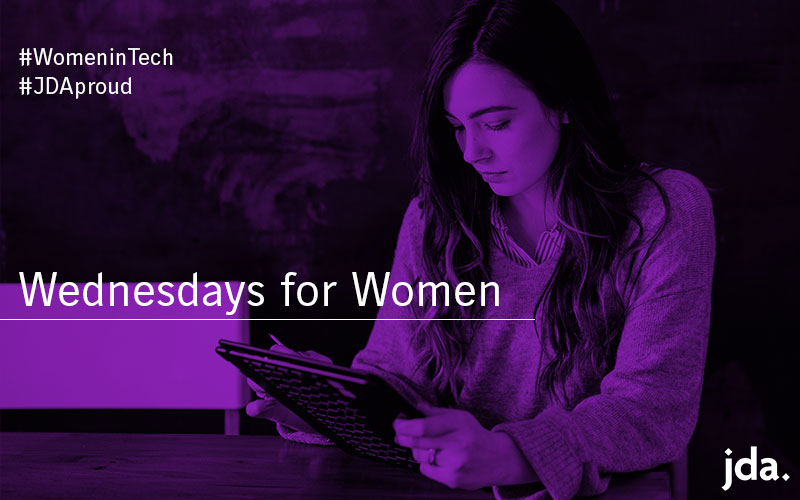As we close out Diversity & Inclusion month, today’s Wednesdays for Women blog is authored by JDA EVP and chief associate success officer Nathalie Carruthers. She gives her perspective on the importance of awareness when it comes to diversity and bias.
 The more I learn about diversity and inclusion, the more I realize how complex the issue is. It is so much more than gender and race. It’s about how we feel as individuals, how we treat others, and from our workplace perspective it relates to how well we create environments where individuals can be authentic and feel valued. While they go together, diversity and inclusion for me are different. Diversity is important, inclusion is critical; diversity is a metric, inclusion is a choice.
The more I learn about diversity and inclusion, the more I realize how complex the issue is. It is so much more than gender and race. It’s about how we feel as individuals, how we treat others, and from our workplace perspective it relates to how well we create environments where individuals can be authentic and feel valued. While they go together, diversity and inclusion for me are different. Diversity is important, inclusion is critical; diversity is a metric, inclusion is a choice.
Finding a way to true inclusion is difficult, not because as humans we are inherently against it but because it is so much easier to surround ourselves with people who are just like us. Biases – conscious or unconscious – are real and overcoming them takes work, but the outcome is very much worth it.
I learned a lesson long ago that has stayed with me and often reminds me of the power of looking beyond differences. My oldest daughter – one of the most accepting persons on the planet who always seeks and sees the best in people regardless of their differences introduced us to a friend of hers while in her early teens. While I have always considered myself open minded, everyone has biases, and training oneself to look beyond those takes effort. Her friend who was polite and nice also had blue messy hair (which in the mid 2000’s was not the fashion statement it is today!). I jumped to conclusions – she must be a rebellious teen. Needless to say, I was very much surprised and horrified at myself a few weeks later when I met this wonderful young lady in a different setting. It turns out, she was a celebrated Girl Guide (Girl Scouts in other parts of the world) who had been recognized nationally for her contributions to the organization and her volunteer work. So why did I think that because of her looks, that her focus and commitment was different? Simply put, I judged and let my biases cloud my views.
Fast forward to the workplace. How many times do we gravitate to those who are like us  because they “get it” and we know will they will “get things done the way we would do them.” While looking to develop our best qualities in others is admirable – after all those qualities are what got us here – successful leaders who surround themselves with diversity are likely to be more successful.
because they “get it” and we know will they will “get things done the way we would do them.” While looking to develop our best qualities in others is admirable – after all those qualities are what got us here – successful leaders who surround themselves with diversity are likely to be more successful.
Letting our biases get in the way hurts us all. By limiting the number of viewpoints, we neglect a number of our responsibilities as leaders. By under-representing diversity and not fostering belonging, we create the risk of not providing our customers with what they deserve – teams solving their complex problems with sustainable solutions. This requires knowledge, skills and more importantly multiple viewpoints to ensure all angles have been explored. We also fail when we do not actively seek diversity and enable this talent to flourish. Our role as leaders is to grow the talent needed to successfully navigate the most challenging of environments and reach successful conclusions.
We owe it to our shareholders to assemble a cadre of associates with diverse backgrounds and foster inclusion to ensure we solve problems looking through all possible lenses. According to McKinsey & Associates, only half of employees think gender diversity is a high priority to their company, and that number hasn’t changed over the last five years (source: McKinsey & Associates Women in the Workplace 2019).
We owe it to our communities to actively build teams that represent the region in which we work and live. We also owe it to our customers to create teams with diverse views. More importantly we owe it to ourselves to cultivate relationships with people different from us, open our minds to seeking the good in everyone and act with courage when we observe behavior that is inconsistent with an environment embracing inclusion.

